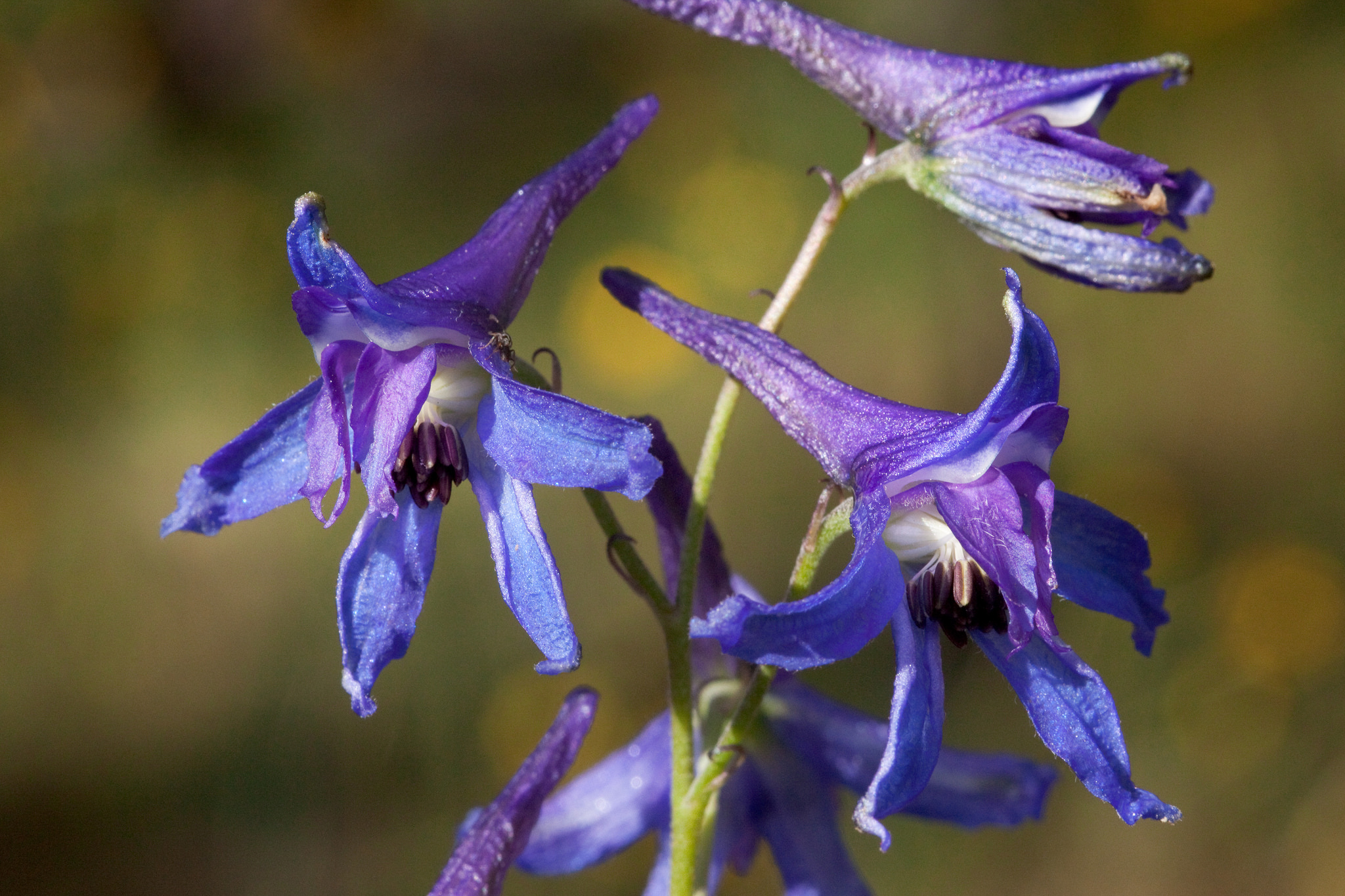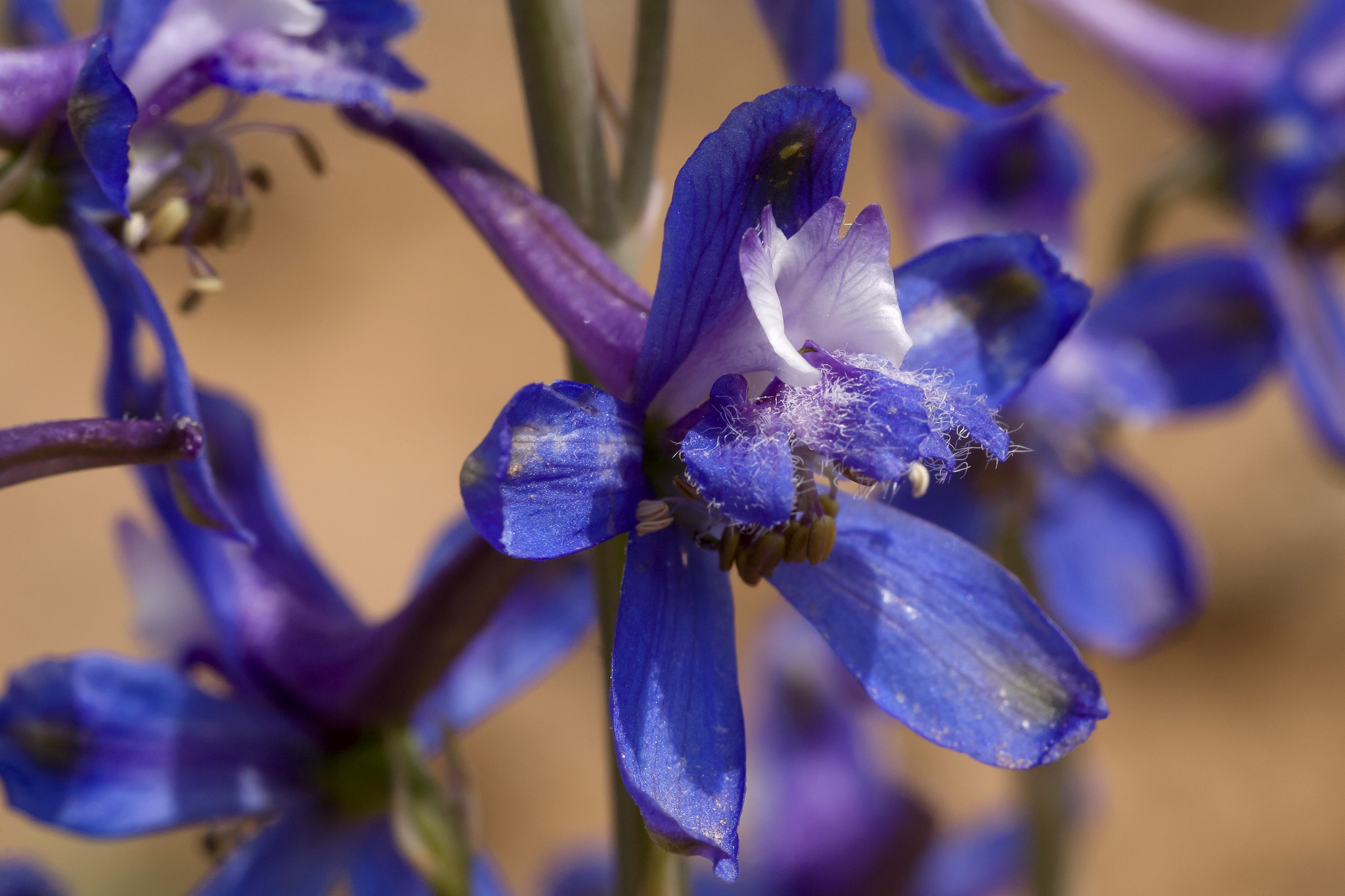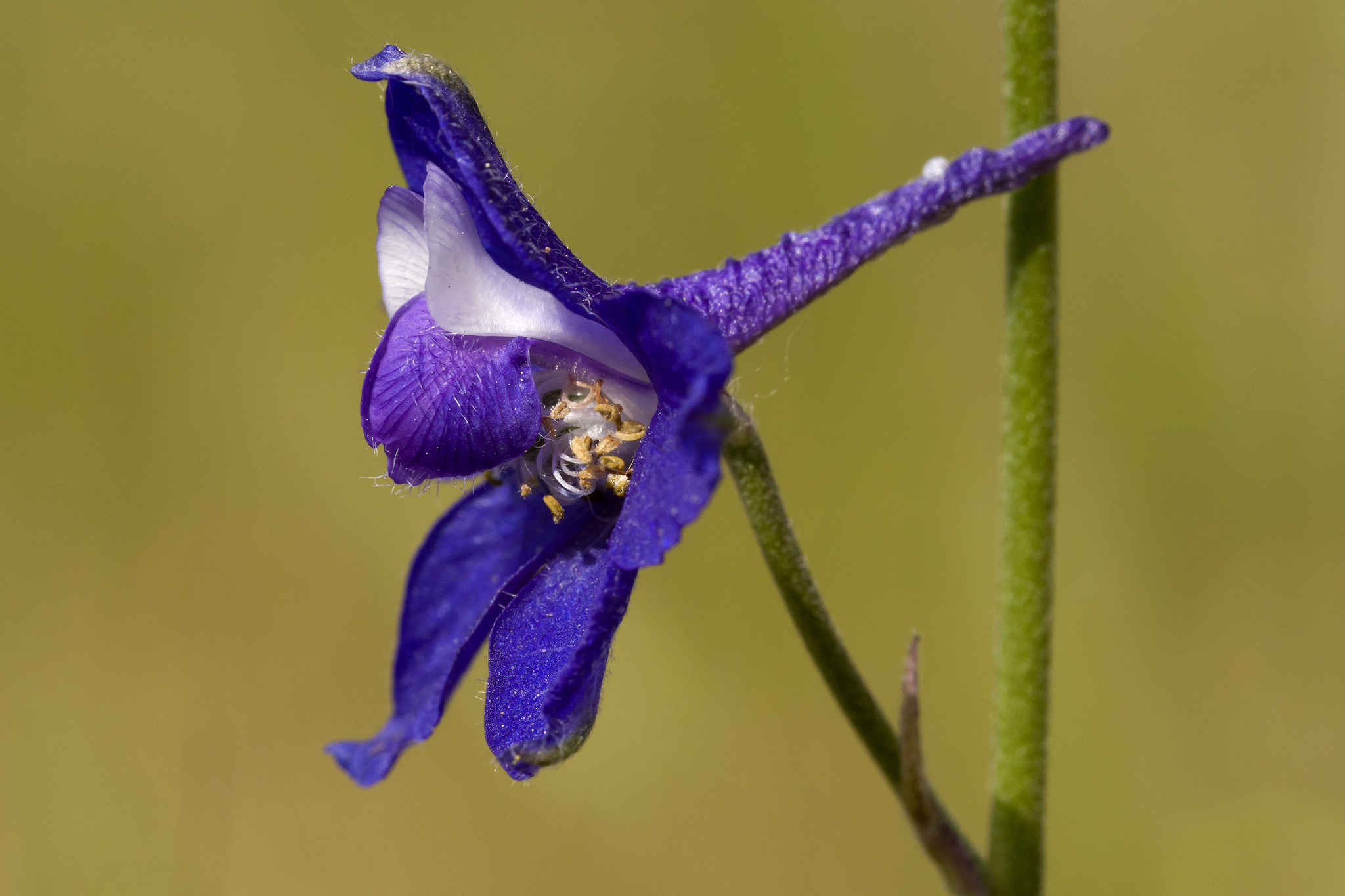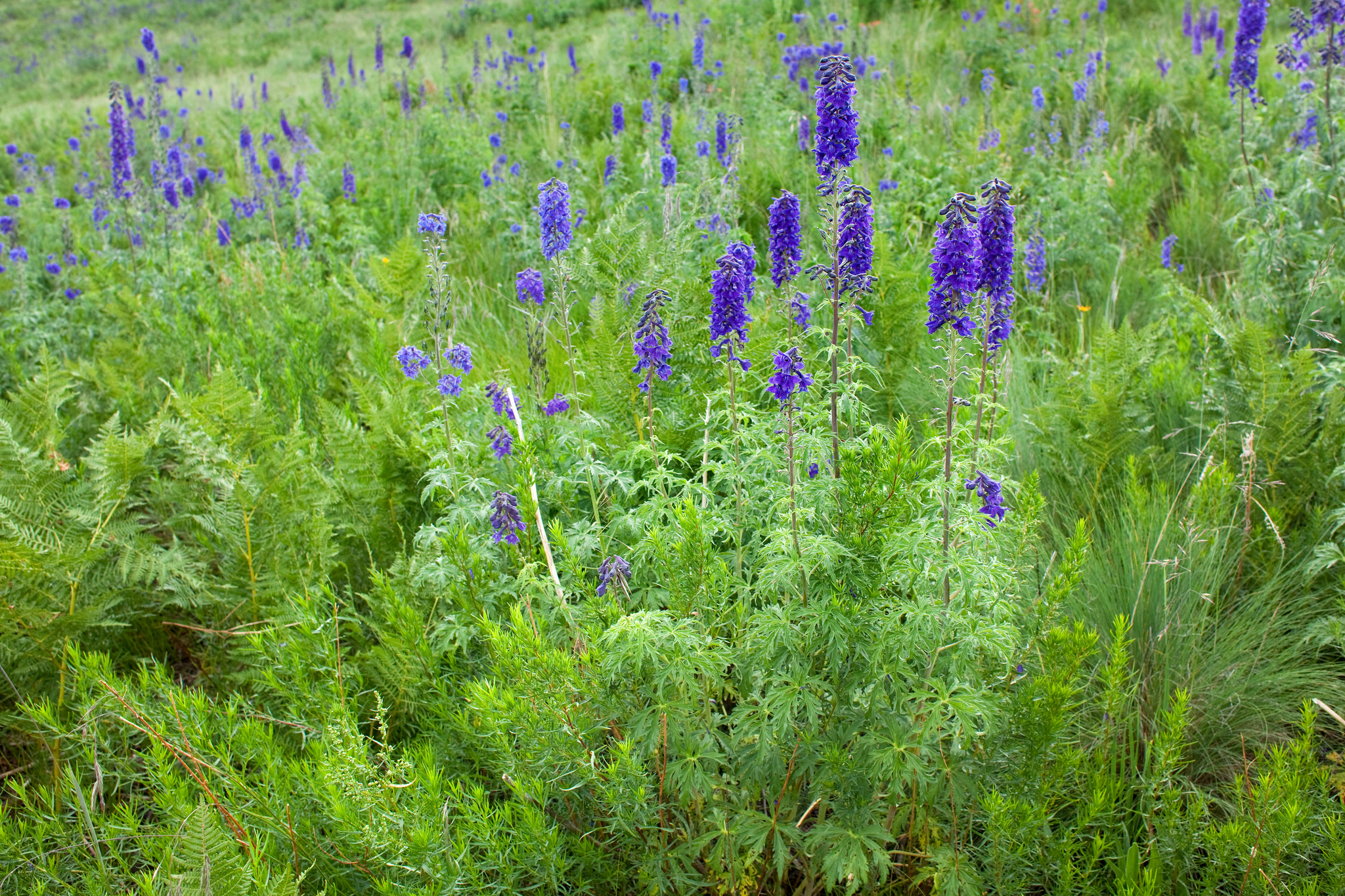Selected Plants of Navajo Rangelands
Larkspur

Larkspur grows 3 to 8 feet tall, with stems that are somewhat straw-colored and hollow at the base, but a darker bluish color above. It grows from a deep, vertical, woody taproot, beginning growth in late spring, flowering July to August, with seeds maturing from August to September.
Flowers are bluish-purple in color with a spur-like projection, which looks like a duncecap, on the calyx, hence its name. Flowers grow in dense clusters at the top of the stem. The leaves are hairy and divided into sharp, pointed segments (palmately lobed) that resemble geranium leaves in pre bloom stage. The fruits/seeds are highly poisonous.
Tall larkspur occurs in meadows, thickets, stream banks, around springs, and in moist meadows and open woods. It is most abundant where the snow pack persists. It is usually associated with aspen and spruce groves.
Larkspur provides fair to good forage for sheep and some wildlife. It is palatable to cattle even when other plants are available. Horses seldom eat it. Larkspur is poisonous to cattle until after blossoming. It contains alkaloids, which act on the nervous system. Death may result following paralysis of breathing; bloat is common.
Traditional uses of larkspur included crushing the plants and applying them to hair to control lice and other insects.





©2018 NMSU Board of Regents.
Individual photographers retain all rights to their images.
Partially funded by the
Western Sustainable
Agriculture Research and Education Program
(westernsare.org; 435.797.2257),
project EW15-023.
Programs and projects supported by Western SARE are
equally open to all people.